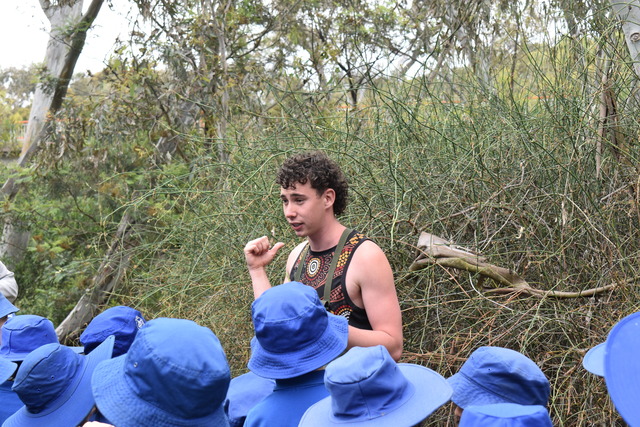This week, let’s go back in time. Not back 60 years – that’s hardly a blip in time – to when Max Schubert hid from his employers at Penfolds the experimental table wines that would become Grange. Not back to the early 1800s, when Australia’s first commercial vineyards were being established. We need to travel back more than a thousand years to the patron saints of beer and wine who are still celebrated in parts of Europe.
Modern-day wine and beer drinkers owe a huge debt to these men, often persecuted for their religious beliefs and some even martyred, who set the course for wine and beer as we know it.
This Sunday marks the feast day of Lawrence of Rome, who was martyred by the emperor Valerian in AD258. After Valerian ordered the beheading of Pope Sixtus II, Lawrence, who was in charge of the church’s treasures, became its highest-ranked official.
Ordered by the emperor to present the church’s treasure, Lawrence instead gave it to the poor before surrendering himself with the city’s poor and crippled, who he said were the church’s true treasures.
Martyred on a gridiron, his death was recorded as “assus” – roasted – and he became the patron saint of many professions, including brewers and maltsters, as the method of his death was said to be similar to the way hops are dried.
The Brotherhood of St Laurence – despite the different spelling – is also named after Lawrence of Rome.
The patron saint of brewers and brewing is Arnold of Soissons, who died in 1087.
Arnold was a soldier-turned-hermit in Soissons in Picardy, northern France, before becoming an abbot at Saint Médard. He rose to bishop before founding a monastery in Oudenburg, Belgium. Arnold began brewing in Oudenburg and encouraged locals to drink beer instead of the town’s water – the fermentation process killed harmful bacteria in the local water.
He is celebrated in Belgium each July in a parade through Brussels to celebrate beer.
German winemakers have a saying that goes “Sun on St Urban’s Day, the wine thrives afterwards, they say”.
Urban of Langres was a bishop in the town in eastern France until religious persecution forced him to take flight in AD374. He found sanctuary in a winery before moving east from one vineyard to another, converting winemakers and vineyard workers to Christianity as he went. Urban of Langres’ feast day is celebrated on April 2 or January 23 in Langres.
Morand of Cluny is the patron saint of winemakers in Burgundy, Alsace, Lorraine, Champagne and the Rhineland. Morand was canonised in 1181 and is attributed with introducing grapevines to Alsace, where he died in Altkirch in 1115.
He is always depicted holding a bunch of grapes, due to the fact he would eat only a single bunch of grapes during the entire period of Lent. Morand’s feast day is celebrated on June 3.
TASTE THIS
Terre à Terre sauvignon blanc 2013 (Wrattonbully) $40; 12%. 5 stars.
Here’s a sauvignon blanc that’s so stylish you quickly forget it’s sav blanc at all – it’s very much its own wine. It’s from a single vineyard of close-planted vines that are grown on Wrattonbully’s terra rossa soils. Barrel-fermented, it’s incredibly complex, with lemongrass, passionfruit and dusty flavours that are delivered with a texture that’s smooth, yet driving, intense, crisp and refreshing. There’s minerality, too, to this wine that’s lengthy and just a little too easy to drink.
Food match Roast chicken
MadFish Premium Red 2012 (Western Australia) $18; 14%. 4 stars.
The MadFish range seems to have been around forever, but its wines are as fresh and good value as anything new on the market. This is sourced from Great Southern and Margaret River and is a blend of cabernet sauvignon and merlot. It’s chock-full of bright redcurrant, cassis, blackberry, violets and malty oak flavours that are concentrated, but verging on refreshing. Great structure and grip, with a decent finish.
Food match Couscous royal
Paradigm Hill Col’s Block shiraz 2011 (Mornington Peninsula) $50; 12.7%. 5 stars.
Smoky, stalky, funky shiraz – wines such as this are my guilty pleasure. While it’s not for lovers of upfront, rich shiraz, the nose is so complex I kept finding myself wanting to keep sniffing rather than sip. It has flavours of cherry, perfume, smoke, stalks, spice and a lick of leather. It’s fresh and silky in the mouth, and with flavour density that creeps up, a lick of grainy tannin and lovely length for a wine that’s so elegant and bright.
Food match Beef carpaccio
By Farr Sangreal pinot noir 2012 (Geelong) $75; 14%. 5 stars.
Planted on red soils in the Geelong sub-region Bannockburn, vines of clones 114 and 115 are planted north to south. The key characteristics of this vineyard block are considered by the Farrs to be perfume and silkiness. These characters are delivered in spades: it’s smoky and stalky, with perfume, too, to the complex raspberry, strawberry and cherry aromas. A wonderful silky texture delivers a wine of intensity, with raspberry, plum, strawberry and autumnal foresty flavours.
Food match Mushroom risotto
A WINTER BREW
3 Ravens English Extra Special Bitter (Thornbury) $20.50 (6-pack, 330ml); 4.5%. 5 stars.
In winter I’m rather partial to a beer that doesn’t need to be served too cold, and more often than not that means a dark beer. This should be kept cold, but not drunk cold. Fuggle and golding hops help deliver complex aromas along with firm bitterness. Maris Otter barley and dark crystal malts provide deep, malt and coffee flavours. A smooth, creamy texture seals the deal.
Food match Lancashire hotpot







